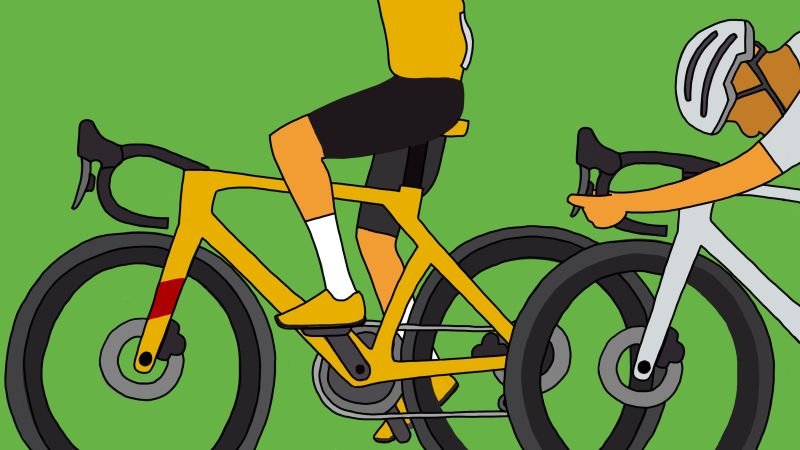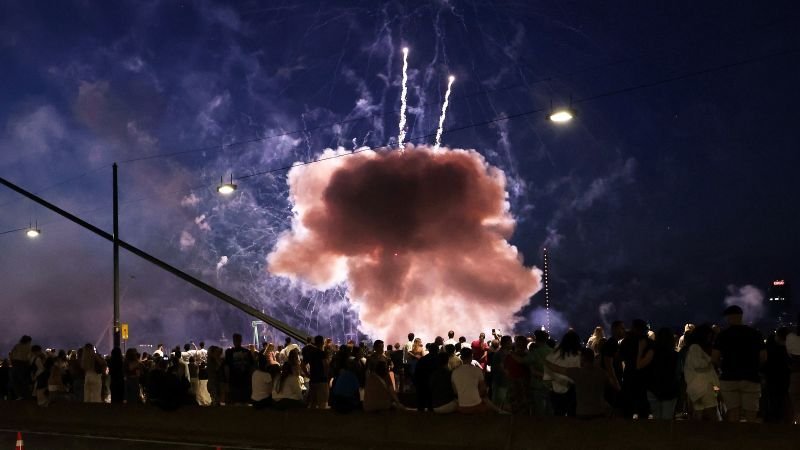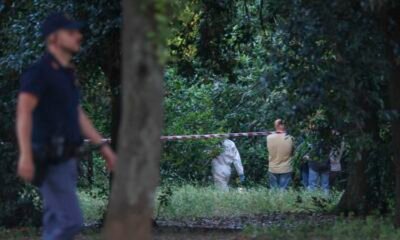CNN
—
The Tour de France’s reputation precedes it. Even if you’ve never seen a bike race or struggle to name a professional rider, the most casual sports fan is aware of just how physically and mentally demanding the event can be.
After 23 days on the road and well over 3,000 km (roughly 1,870 miles) cycled mostly around France, there are often just a handful of seconds separating the final podium finishers.
While the route changes each year, the 2025 iteration of the Tour follows tradition by being composed of 21 total stages.
For this year’s riders, though, Stage 19 stands above many others in terms of both difficulty and importance.
Competitors will have to climb a grueling 4,550 meters (about 14,930 feet) over the course of 130 km (almost 80.8 miles), the stage runs through the heart of the French Alps from Albertville all the way up to La Plagne.
For the Tour’s top contenders, this stage could make or break their shot at the coveted yellow jersey. It represents perhaps the final – and most brutal – opportunity to gain time on rivals before the race heads toward its conclusion.
But Stage 19 won’t just decide the fate of the pros. For the amateur riders tackling L’Étape du Tour – the public version of this exact stage – it’s a once-in-a-lifetime challenge and a chance to test themselves on the same roads as cycling’s elite.
L’Étape has been offering cycling enthusiasts from around the globe the chance to complete a Tour de France stage for over three decades.
This year, 16,000 riders are set to descend upon the hilly environs of the Auvergne-Rhône-Alpes region, with over 90 nations represented.
Christian Prudhomme, Director of the Tour de France, has described this year’s L’Étape as a “treat” for participants, who will endure each of the gargantuan climbs five days ahead of the pros.
Speaking to CNN Sports, some of this year’s participants shared their excitement and trepidation ahead of what many have dubbed “the challenge of a lifetime.”
The skill and experience levels of those taking part vary widely, from those hoping to one day go pro to others with full-time jobs taking part in their first-ever endurance event.

For charity worker Amy Young, she classes herself as somewhere in between those two extremes.
The English amateur rider will be taking part in her first L’Étape du Tour but has previously competed in other iterations of the famed amateur race, placing third in the female category at last year’s Irish event.
“I’m a cycling addict, so I just always want to push myself and my bike and see how far I can go,” Young told CNN Sports ahead of setting off for France.
“It’s the challenge of a lifetime, really, in terms of cycling. It’s such an iconic route, and to say you’ve ridden the most challenging stage of the Tour de France would be quite something.”
Living in Northamptonshire – an area of England not famed for its rolling hills – Young has found it tough to find training climbs comparable to the ones she is set to face in the French Alps.
“The amount of climbing we will have to do over the course of just one ride will be the biggest challenge I’ve faced on a bike,” the communications executive said.
“Being from where I’m from in the UK, it’s hard to properly put into scale just how big and steep some of the climbs will be.
“I’m honestly struggling to visualize the length of some sections. We are talking climbs that will take in excess of an hour at a time.”

For Young, the fifth and final climb is what makes her the most nervous.
A grueling 19.1 km (roughly 11.9 miles) slog at a 7.2% gradient, riders will be tested with the most punishing portion of the race after having already completed over 100 km (roughly 62 miles), with 24 hairpin turns thrown in for good measure.
It is not just the climbs that riders fear, though, with a record-breaking heatwave also gripping large parts of Europe over the course of the summer.
Participants have been told that they could face highs of up to 35 degrees Celsius (95 degrees Fahrenheit) on the day of the race.
The month of June was the region’s hottest on record, with the mountainous jewel of the Alps, Mont Blanc, seeing temperatures at its snow-covered peak rise above zero for the first time in recorded history.
For 46-year-old civil servant Denny Kearns, the chance to compete at this year’s L’Étape is one he is not taking for granted.
Originally due to take part in last year’s event, the Hastings native saw his world turned upside down when he was diagnosed with testicular cancer in April 2024.
With the cancer spreading to his abdomen and lungs, Kearns was forced to withdraw from the event and undergo an intense three-month period of chemotherapy.

“It was one of the toughest periods of my life,” Kearns told CNN Sports.
“I had trained for almost half a year and then overnight was told that all that work had been for nothing.
“The first question I asked the oncologist after my initial scan was: ‘How long until I can get back cycling?’
“The cancer was hard to accept, but being told I couldn’t compete in my bucket list race made it even tougher.”
Thankfully, Kearns’ treatment proved successful, and once he was given the all-clear from his doctors, he fixed his sights firmly on competing at this year’s event.
“I’m trying not to think about the climbs too much. When I start, it gives me the jitters!” Kearns said apprehensively.
“It is going to be my first time ever doing something like this, so I don’t fully know what to expect.
“The main thing for me is getting over that finish line. That’s when I’ll know that I’m finally back to being my old self and 100% healthy again.”

Unlike the professional riders tackling Stage 19, the vast majority of L’Étape participants such as Young and Kearns must walk the training “tightrope” in the lead-up to the race.
Both balancing full-time jobs, the pair admit to their preparations being difficult to keep up with alongside the hectic nature of everyday life.
“It can get a bit much at times,” said Young. “I’m going out riding before and after work each day during the week.
“When the weekend comes around, my partner and I then head off to a hillier area of the UK to try and get some climbing practice in.”
Similarly, for Kearns, the training has come to consume much of his life since the turn of the new year.
“I began training in the winter with maybe six to eight hours per week of riding,” he said. “I’m now at the stage where I’m doing 12 hours plus per week of training.”
Much of this training has been indoors too, with Denny opting to train on a stationary bike in heated conditions to try and best replicate what he will face in the depths of the French summer.
In terms of goals and aspirations for the event itself, both participants winced when asked how they would shape up versus the professional riders.
Elite names like last year’s Tour winner, Tadej Pogačar, will be expected to complete the stage in and around the four-hour mark.
Last year’s L’Étape event, which ran through the Alpes-Maritimes near Nice, featured elevation and distances similar to this year’s iteration.
Pogačar won the same 133 km (roughly 82.6 miles) stage in just four hours and four minutes, averaging a speed of 32.6 kph (about 20.26 mph).

Even when comparing the Slovenian’s time to that of elite amateur riders taking part in last year’s L’Étape, the difference is stark.
French rider Damien Jeanjean claimed first place in last year’s event with a time of four hours and 40 minutes. The impressive performance would have placed him around 100th in the Tour de France rankings for the same stage, but granted, the pro riders also have been riding anywhere between 15 to 18 stages before taking on the same course.
Moreover, the average finishing time for last year’s L’Étape riders was somewhere between six-and-a-half and seven hours, with an average speed of roughly 25 kph (about 15.5 mph).
Conversely, the average time for the professionals was roughly 4.5 hours, equating to an average speed of around 30 kph (about 18.6 mph).
For this year’s L’Étape participants who spoke to CNN Sports, the goal is not necessarily to challenge elite amateurs such as Jeanjean, but rather to push themselves as far as they can.
Young is aiming for anything close to seven hours, which she believes should see her finish in the top portion of the L’Étape female division.
Kearns, too, isn’t aiming to break any stage records but hopes to cross the line in just under eight hours.
“It has been a long journey to this point. I just can’t wait until the end of the race – that’s when I’ll know I’m finally fully recovered and back to being my old self.”























